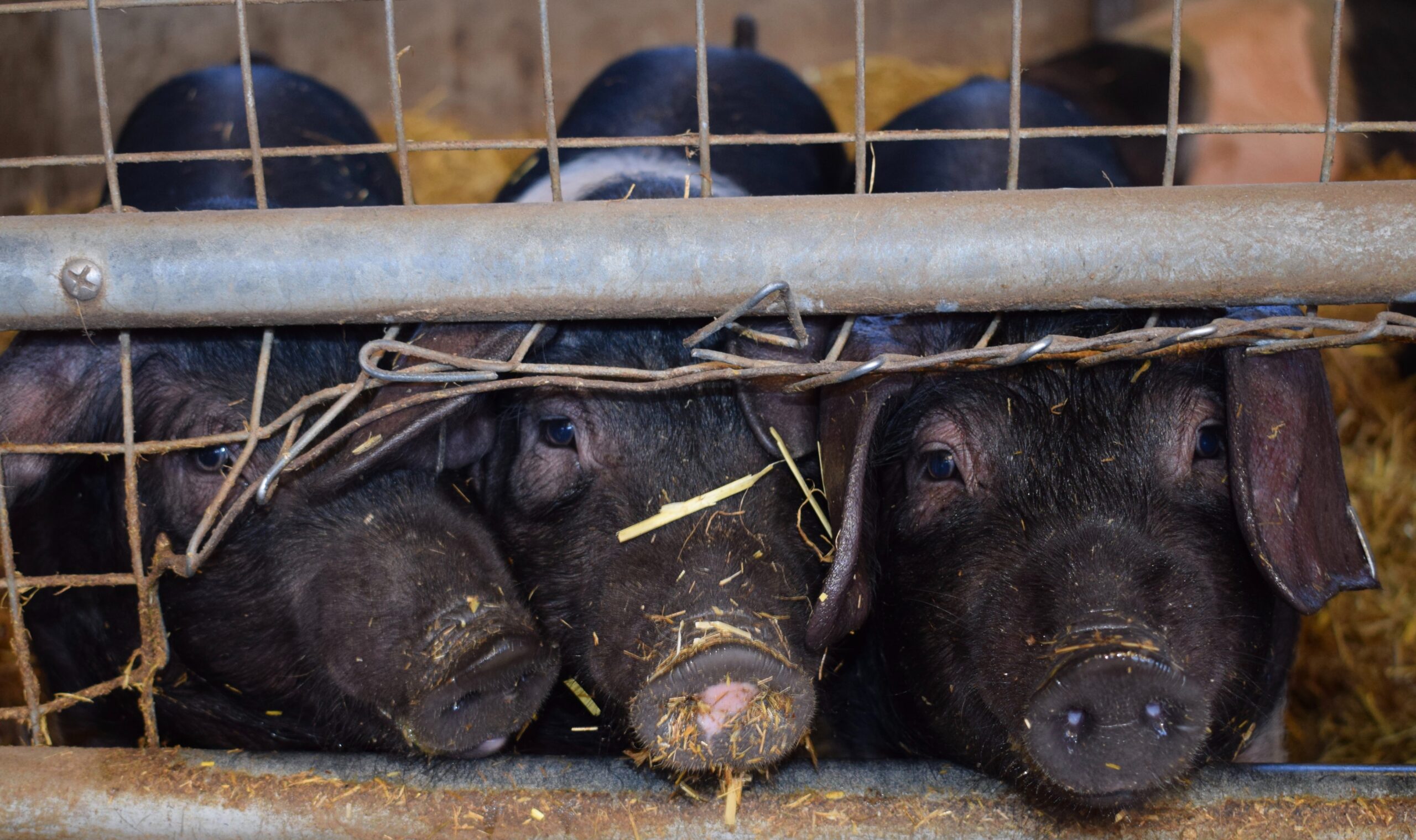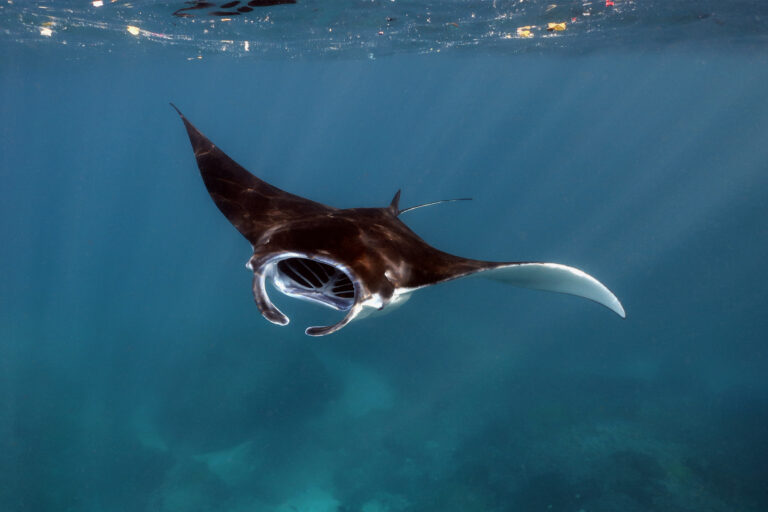- A new report proposes a set of three policy interventions by governments that could help parts of the global economy rapidly decarbonize.
- The authors identified three green switches with the potential to not just lower carbon emissions in one sector but trigger further positive tipping points, resulting in faster decarbonization in other high-carbon industries.
- Among the potential policy interventions, the report says a mandate on zero-emission vehicles could cut battery costs; supporting green ammonia in fertilizers could widen hydrogen use; and purchasing alternative proteins for food served in public institutions could reduce land pressures and cut agricultural emissions.
From rising sea levels to scorching heat waves, the planet has one foot in the climate grave. But a new report says three targeted policy interventions could lead to positive tipping points, helping pull us back from the brink.
The report — produced by Systemiq, a company that advocates for “systems change” in the global economy, along with the University of Exeter in the U.K. and the Bezos Earth Fund — focuses on areas that could trigger “a cascade of decarbonization” in sectors representing 70% of global greenhouse gas emissions. It was released at the annual World Economic Forum meeting in Davos, Switzerland, in January.
These positive or “desirable tipping points” can help humankind “transition to net zero greenhouse gas emissions as fast as we can,” Tim Lenton, chair in climate change and Earth system science at the University of Exeter and a contributor to the report, told Mongabay.
The report, titled “The Breakthrough Effect,” identifies three credible “super-leverage points” that have the potential to cut carbon emissions not just in one sector, but to snowball into a series of tipping points and support faster decarbonization returns across numerous industries. Such positive tipping points occur where “reinforcing feedback within a system is able to get strong enough to become self-propelling,” according to Lenton. The first recommendation is for a mandate on zero-emission vehicles; the second a mandate to employ green ammonia as fertilizer; and the third is public procurement of non-meat proteins.
All three of these sectors are connected to other industries, the report’s authors point out, so channeling money into any of them would have knock-on effects on difficult-to-abate emissions. A zero-emission vehicle mandate would make battery production cheaper and accelerate the development of renewable energies, according to the researchers, while carbon-free fertilizers would boost hydrogen growth, and procuring plant-based proteins would greatly reduce pressures on agricultural land.
Erik Faassen, an expert at the Institute for European Energy and Climate Policy (IEECP), who was not involved in the report, said these possible actions were “signs change is about to come.”
Governments have long focused on the optimal rate of warming to tolerate before reacting, which in Lenton’s view was “built on a crazy idea that we actually knew the consequences of our actions.” But tipping points work both ways. Scientists have warned that failing to cap the average global temperature rise at 1.5° Celsius (2.7° Fahrenheit) above pre-industrial levels will precipitate irreversible damage to the Earth’s life-support systems, also known as tipping points.
Whether it’s the dieback of the Amazon Rainforest, the collapse of the Greenland ice sheet, or a shift in the West African monsoon, these critical thresholds, if crossed, risk “locking us into self-perpetuating climate change,” the report’s authors warn.
They say the positive tipping points are needed to keep these cataclysmic ones at bay.

Driving away from fuel
The report’s first of three “super-leverage points” is for governments to mandate zero-emission vehicles (ZEVs) in light road transport by requiring carmakers to ensure that ZEVs make up for a rising share of car sales. The report notes that this would push ZEV prices down and hike demand, thereby “reinforcing feedback loops as a dominant market force.”
“Versions of this policy have proved highly effective in California, China, and the Canadian provinces of Quebec and British Columbia,” its authors say, adding that the ZEV mandate involves no government expenditure, but relies on the reallocation of industrial capital. ZEVs are electric vehicles that run on rechargeable batteries or cars that run on hydrogen fuel instead of petroleum (although the latter have not gone mainstream yet).
By mandating ZEVs, governments could cause a tipping point in battery production, according to the report. The researchers say that boosting the adoption of electric vehicles to 60% of total car sales by 2030 would lead to a tenfold increase in the volume of battery production from current levels and, as a result, a 60% decline in battery costs by that date. This, they add, would in turn reduce the cost of solar and wind deployment and power storage solutions.
“By rapidly increasing the production of batteries, prompting technological and cost improvements, electric vehicles could support the transition to clean power, and the decarbonization of other sectors that need cheap and clean electricity,” the authors write. They add that other types of support will also be vital, including investments in charging infrastructure.
In heavy road transport, cheaper and better-performing batteries could also increase the competitiveness of electric trucks, the report adds, “bringing forward the point where they outcompete petrol or diesel trucks.”
Lenton, nonetheless, said a mandate could face a lot of political opposition. He cited an attempt by Republican lawmakers in the U.S. state of Wyoming to pass a resolution to phase out the sale of all new EVs by 2035. The resolution failed.
“You can get backlash from incumbents in particular sectors and some governments can be weak,” he said. “That often also stems back to what’s the dominant political ideology: is it laissez-faire — basically, let the market decide everything, in which case we’re doomed — or are we actually going to exercise considerable public purse for our collective good?”

Green ammonia mon amour
A compound of nitrogen and hydrogen, ammonia is most commonly used in fertilizer production. It’s typically produced from fossil fuels, and hence has garnered interest as a climate solution. If produced from green hydrogen — which is generated by splitting water molecules into hydrogen and oxygen using renewable energy — it could become, in its turn, green. The report says that if governments mandate the use of this green ammonia in the production of agricultural fertilizers, it could kick-start the growth of the hydrogen economy by bringing down costs and widening its use in storing energy and powering ships.
“For example, implementing a 25% green ammonia blending mandate in fertilizer manufacturing could create demand for almost 100 GW [gigawatts] of hydrogen electrolyzers, which would reduce capital costs by ~70% given current learning rates,” the report’s authors say, particularly as agricultural products must meet the needs of a growing population. Hydrogen electrolyzers are the machines that split water into oxygen and hydrogen.
Green ammonia can be shipped at a relatively low cost, so it can be produced where hydrogen costs are the lowest.
“Further, there is no end-sector conversion required since fertilizer plants already consume ammonia,” the report adds. Its authors, however, are not as confident here as they are for the ZEV mandate, citing hydrogen production as “a nascent industry with limited historical data across its use cases.”
“It would make economic sense anyway to try,” Lenton said, especially when the price of conventional fossil fuel fertilizer is so high. “It’s encouraging that there are governments that have seen this is a logical first niche for green hydrogen,” he said, calling for a more “risk-opportunity analysis approach to the climate situation.”
India’s draft hydrogen strategy, for instance, requires 5% minimum green ammonia production for the domestic fertilizer sector by 2023-2024, and 20% by 2027-2028, according to the report.
Its authors say that mandating green ammonia should also be combined with appropriate financing mechanisms to avoid higher crop prices that “would disproportionally affect the most vulnerable populations.”

We won’t meat again
The third tipping point? Taking fake meat public.
The report says governments should publicly procure alternative proteins for food served in public institutions such as hospitals, prisons, schools and government offices. It notes that introducing more consumers to rich-protein products from plants, algae or lab-grown meat would rapidly increase demand and reduce costs, helping producers achieve economies of scale while shifting social norms around meat consumption.
Growth in global meat consumption is expected to increase by 14% by the end of this decade, according to the Food and Agriculture Organization’s 2021-2030 Outlook report, driving up GHG emissions. To counter this, the researchers estimate that putting non-meat proteins into public institutions could double its projected market share to 20% in 2035 and beat animal proteins on cost.
“This would free up an estimated ~400-800 million hectares of land from use for meat production, equivalent to 7-15% of total land currently dedicated to agriculture,” the report says. This would leave more land available for natural carbon storage, easing pressure to clear forests for crop plantations and livestock pasture, and lowering emissions from methane-heavy livestock farming.
In Faassen’s view, alternatives that “make it harder for ‘the old,’ tried and proven polluting technologies and processes to exist [will] create room for new, more fit-for-purpose processes to emerge.”
The higher uptake in alternative proteins would require matching animal proteins on flavor and texture, the report says. But plant-based proteins, an industry valued at about $30 billion annually, are already well advanced technologically, the report adds.
To Lenton, this mandate is partly in the hands of governments. In countries like the U.K., he said, politicians “as a rule wouldn’t go anywhere near telling people what they could or couldn’t eat.” But this isn’t a lost cause, he added, as schools are proactively turning to plant-based foods.
“We can make a clear evidence-based case in the health sector that eating less red meat is better for your health, let alone the planet,” he said.
But like hydrogen, the fake meat market is only emerging.
“The general unpredictability of the underlying innovations these ‘super-leverage points’ ought to bring are the main challenges,” Faassen said. “The issue with disruptive change is that, by its very nature, it is very difficult to … plan for.”

‘The super-super-leverage point’
Lenton, who calls himself “a mixture of an optimist and a pragmatist,” said he was upbeat on the renewables transition, since low-carbon power sources have started to shut down fossil fuel power stations even before their lifetimes are up.
For example, wind and solar accounted for a record one-fifth of the European Union’s electricity in 2022, overtaking gas for the first time, according to a study published in January by the think tank Ember.
Lenton said the report’s co-contributor, Simon Sharpe from the Climate Champions team, described the clean energy leverage option “as Sisyphus, who in the Greek mythology, has to push the boulder up the hill. When you’re trying to change an energy source, you have to do some pushing the boulder up the slope, but at some point, you’re going to get to the top of the hill where the boulder starts rolling down the other side into this new renewable energy world.”
Then, as costs go down, incentives for further renewable electrification are bolstered.
One straightforward idea: Lenton said public money for fossil fuel extraction subsidies and tax credits could be shifted “more decisively” toward renewables.
“That’s perhaps the ‘super-super-leverage point’: private and public movements of capital just to push the renewables transition ever quicker,” he said.
“Change is going to be messy and chaotic,” Faassen said, “and we’re definitely not going to do it right. This doesn’t mean, however, that it is impossible and not going to happen.”
Banner image: A polar bear on an ice floe, by Hans-Jurgen Mager via Unsplash.














